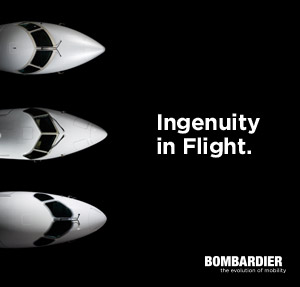Moon-Bound NASA Spacecraft Passes Major Preflight Tests
Written by thomas · Filed Under Aeronautics NewsJune 25, 2008
MOFFETT FIELD, Calif., June 24 /PRNewswire-USNewswire/ — Engineering
teams are conducting final checkouts of the Lunar Crater Observation and
Sensing Satellite, known as LCROSS, that will take a significant step
forward in the search for water on the moon.
The mission’s main objective is to confirm the presence or absence of
water ice in a permanently shadowed crater near a lunar polar region. A
major milestone, thermal vacuum testing of the LCROSS spacecraft, was
completed June 5 at the Northrop Grumman facility in Redondo Beach, Calif.
To simulate the harsh conditions of space, technicians subjected the
spacecraft to 13.5 days of heating and cooling cycles during which
temperatures reached as high as 230 degrees Fahrenheit and as low as minus
40 degrees. Previous testing for the LCROSS spacecraft included acoustic
vibration tests. Those tests simulated launch conditions and checked mating
of connection points to the Atlas V rocket’s Centaur upper stage and the
adapter ring for the Lunar Reconnaissance Orbiter, known as LRO.
The satellite currently is undergoing final checkout tests. After all
tests are complete, the LCROSS spacecraft will be prepared for delivery to
NASA’s Kennedy Space Center in Florida for launch processing and
integration onto the Atlas V as a secondary payload to LRO. Both spacecraft
are scheduled to launch from Kennedy in late 2008.
“The spacecraft steadily has taken shape since Ames delivered the
science payload in January,” said Daniel Andrews, LCROSS project manager at
NASA’s Ames Research Center in Moffett Field, Calif. “It is a testament to
the hard work, perseverance and expertise of the NASA and Northrop Grumman
teams that the spacecraft has completed these critical tests ahead of
schedule.”
After launch, the LCROSS spacecraft and the Atlas V’s Centaur upper
stage rocket will execute a fly-by of the moon and enter into an elongated
Earth orbit to position the satellite for impact on a lunar pole. On final
approach, the spacecraft and the Centaur will separate. The Centaur will
strike the surface of the moon, creating a debris plume that will rise
above the surface. Four minutes later, LCROSS will fly through the debris
plume, collecting and relaying data back to Earth before impacting the
lunar surface and creating a second debris plume. Scientists will observe
both impacts from Earth to gather additional information.
LCROSS is a fast-paced, low-cost mission that is leveraging existing
NASA systems, commercial-off-the-shelf components and the spacecraft design
and development expertise of integration partner Northrop Grumman Space
Technologies. The LCROSS and LRO missions are components of the Lunar
Precursor Robotic Program at NASA’s Marshall Space Flight Center,
Huntsville, Ala. The program manages pathfinding robotic missions to the
moon for the Exploration Systems Mission Directorate at NASA Headquarters
in Washington.
» Próximo Post - DuPont and SFC Smart Fuel Cell AG Develop First Portable Power System for U.S. Army
« Post Aneterior - GOL recebe aprovação do CADE para aquisição da VRG
Comments
¿Tiene algo que decir?
You must be logged in to post a comment.







